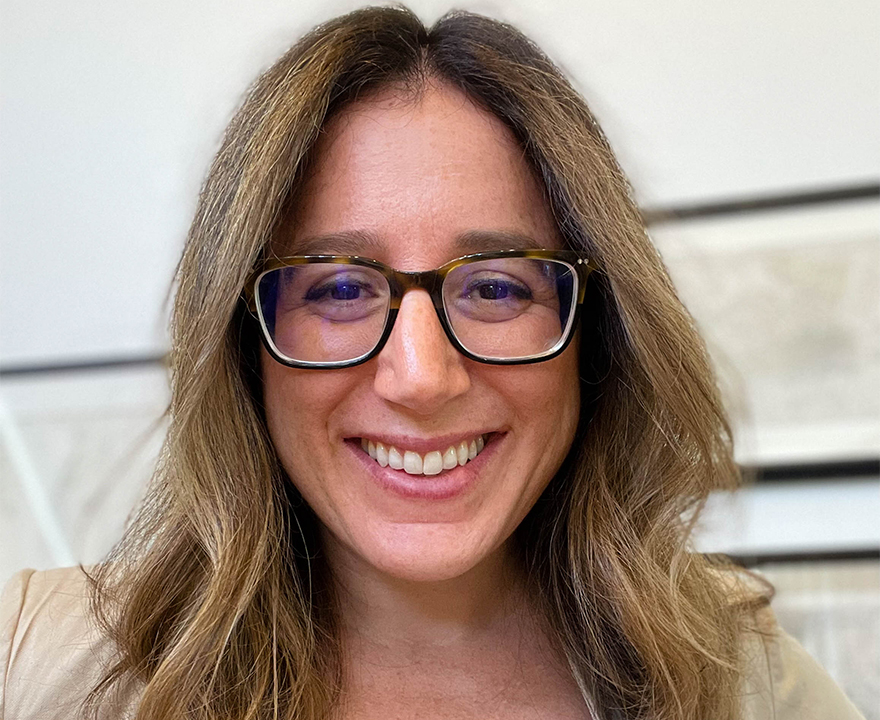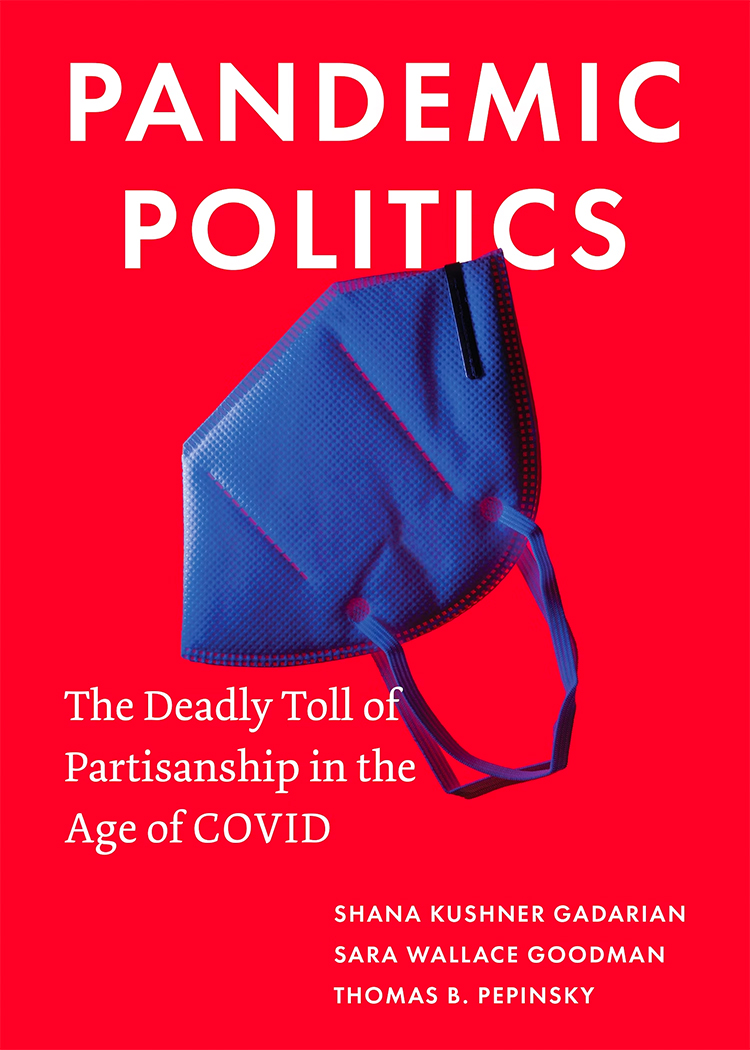
Pandemic Politics: The Deadly Toll of Partisanship in the Age of COVID
 The political divide in America has been deepening for decades. When COVID-19 first
hit, there was a critical window of opportunity for a unified, public health response
that transcended partisan politics. Instead, writes Sara Wallace Goodman in her new
book, Pandemic Politics: The Deadly Toll of Partisanship in the Age of COVID, what ensued was a politically motivated presidential power play with grave consequences:
over a million American lives have been lost and the public is more polarized now
than ever. Below, the UCI political science professor draws from national survey data
her team collected to explain how the country’s politicized response shaped public
opinion, health behaviors and outcomes, and what the fallout means for the future
of American democracy.
The political divide in America has been deepening for decades. When COVID-19 first
hit, there was a critical window of opportunity for a unified, public health response
that transcended partisan politics. Instead, writes Sara Wallace Goodman in her new
book, Pandemic Politics: The Deadly Toll of Partisanship in the Age of COVID, what ensued was a politically motivated presidential power play with grave consequences:
over a million American lives have been lost and the public is more polarized now
than ever. Below, the UCI political science professor draws from national survey data
her team collected to explain how the country’s politicized response shaped public
opinion, health behaviors and outcomes, and what the fallout means for the future
of American democracy.
Prior to the pandemic, political polarization was already a growing concern among the American electorate. How has the pandemic exacerbated this problem – and why is this a critical issue?
Simply put, the pandemic took a topic that isn’t traditionally divided along partisan lines – public health – and made it political. Political parties traditionally disagree with actions of a President from an opposing party – for instance, Republicans were deeply critical of Obama’s management of the Ebola outbreak in 2014 – but this partisan response does not typically spill over into ordinary citizen attitudes, much less behavior. Before the pandemic, attitudes toward a seasonal flu shot were not predicted by your partisan identity. But the pandemic made American politics worse by dragging public health into the arena of politics. Now politicians in places like Tennessee and Florida oppose any immunization requirements to attend public school. Trust toward the CDC has never been lower. For all their faults, it is important that the public trust health officials in times of crisis. It is also critical that there is trust at the community level between citizens. Our ability to fight the next pandemic is severely handicapped because of how politics defined and engulfed our response to this one.
What health behaviors did your research team discover to be linked with political party preference? Likewise with health policy – how did political beliefs factor into a person’s opinions on health policy measures? And at what cost?
We looked at a bunch of health behaviors: washed hands more frequently, avoided gatherings, avoided contact with others, sought information on COVID-19, bought hand sanitizer, self-quarantined, wore a mask, changed travel plans—basically all the things you might have done in the early days of the pandemic (except wipe down your groceries!). And we were the first team of researchers to field a nationally representative survey asking Americans about their health behaviors and attitudes, so we were able to trace these behaviors over the course of a year. Political beliefs affected almost each one of these behaviors, where Democrats reported what we call more pro-social health behaviors (e.g., wore a mask) than Republicans, controlling for factors like age, income, gender, place of residence, community caseload, etc. These are very robust models. Over time, as behaviors declined in general, we still observe a large gap between Republicans and Democrats on these behaviors.
We observe the same effect of partisanship on health policy attitudes. Democrats report more support for enforcement of lockdown measures, including practices like mobilizing the national guard in the early months, more support for implementing contact tracing, and cancelling public events. For these types of policies, there was an early window where elite signals could have made a difference in bringing opinions together, but Trumps’ decidedly laissez-faire attitude toward mitigation and outright undermining of health recommendations ensured not only that opinions would differ but that opinions would widen over time. Sure enough, on behavior and attitudes, differences only grew in time.
You ask at what cost? The cost of lives. Dr. Birx reported early on that they could have saved thousands of lives by pushing Trump to take the pandemic seriously. Over time, attitudes became entrenched. By the time we reach fall of 2021, thousands of Americans could have been vaccinated but weren’t, and we saw a high correlation between death from COVID-19 and living in a Trump-supporting county. That was entirely avoidable.
What did survey responses tell you about the way Americans assign credit and blame for pandemic outcomes? Was it a clean split down party lines? Were you surprised by this?
Yes, it was a clean split and no, we were not surprised at all. We have a whole chapter on credit and blame. In late-March 2020, Republicans blamed Obama, followed by the CDC, followed by the states, with only 10% of so of our Republican sample blaming Trump. Democrats were quite the opposite – 75% blamed Trump, followed by the CDC. This dynamic didn’t really change much over time. Credit was really just an inverse measure of blame, but there was more credit to spread around, with high support across party lines for doctors, essential workers, even Dr. Fauci. The one actor where there was a clear partisan difference was in evaluating Trump.
Racial inequity has been a defining characteristic marking the severity of COVID’s community impact, from the disproportionate representation of people from racial/ethnic minority backgrounds working in jobs deemed essential and therefore at greater risk of contracting COVID, to underlying health, economic and social inequities that have made these communities more susceptible to serious complications and death from COVID. What did your survey uncover in this regard?
The pandemic was always going to hit some Americans harder than others. We call these “preexisting conditions” in the book: racial and economic inequality and a crumbling healthcare infrastructure were always going to make for a hard pandemic. Our book only adds to the mountain of evidence that makes this point, documenting ethnic and racial minorities experience COVID more frequently than whites, but we find some interesting things. Republicans – especially in the early months of the pandemic – largely thought of COVID-19 as an “urban problem.” This is when we were reading stories about New York and San Francisco, but that was not the case in lived experiences, especially by June 2020. We also ask about Asian American and Pacific Islanders (AAPI) violence, who were viciously scapegoated as Trump freely threw around slurs to refer to the pandemic’s origin. Here, we found people thought anti-Asian violence was less serious if they watched right-wing news.
What finding were you most surprised by?
Not a finding per se, but I am still surprised how many people we let die from COVID-19. How much of these deaths were avoidable. How many families were destroyed. I will never get over this.
The situation seems dire for American democracy. In our current position and looking ahead to a post-pandemic society, is there a way to bridge the divide? If so, what does this look like? If not, what does that mean for the country’s future?
It is hard to think optimistically, but this was a challenge at the end of the book: write a conclusion about what you learned and move forward. My co-authors and I were really torn about what we could say. It would be great if we were one of those countries with a robust welfare state, social safety net, high levels of interpersonal and government trust, but we’re not. We have pre-existing conditions – political polarization, ineffective healthcare, economic and racial inequality, and the tailwinds of Trump’s cult of personality – that we have to work with. So what can we do in this environment? A clear lesson we can learn from is that public health communications need to support public health authorities. This may rebuild institutional trust. Also, positive campaigns that tout the benefits of public health interventions like vaccines can rebuilt reservoirs of active support for public health measures. And, generally, we need to make greater investments in American citizenship, with a civic education overhaul that emphasizes community action and the value of working collectively.
Pandemic Politics: The Deadly Toll of Partisanship in the Age of COVID is coauthored by Shana Kushner Gadarian, Merle Goldberg Fabian Professor of Excellence in Citizenship and Critical Thinking and professor and chair of political science, Syracuse University; Sara Wallace Goodman professor of political science, University of California, Irvine; and Thomas B. Pepinsky, Walter F. LaFeber Professor of Government and director of the Southeast Asia Program, Cornell University.




connect with us